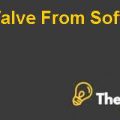
Q1. What are the key elements of Toshiba’s business strategy in notebook computers? In what way do OME’s operations support this strategy?
Toshiba had shattered its competitor’s position with its technologically superior products and also with its aggressively priced products. In this way Toshiba has maintain the position of a market leader. The contribution of OME’s operations is the main key behind this huge success. It was the efficiency of these operations that it had enabled Toshiba to produce products at lower prices with the highest level of quality. The efficiency of the manufacturing processes and operations resulted in lower unit costs for the products. The company as a result also made further investments on quality to weaken the competitor position in the market. There were some of the core skills of the employees of the company and also some core competencies for the company’s huge success. The core elements include the lower costs of the products and the optimization of the manufacturing processes, production of superior products, mitigation of risk, joint ventures, partnerships, continuous improvement programs and the refinement of the manufacturing operations of the company. Apart from that the labor required per unit was also reduced by reducing the assembly lines by reorganizing some of the work areas. To provide specialization for the workers, the assembly lines were organized. Also, OME employs 4 different types of workers ranging from affiliated, temporary, part time and full time workers. All of these employees are given special training and they spend one month on these assembly lines before starting on their actual work. Along with these workers, it had other type of workers known as ‘pack-men’ workers. These were the expert workers that could work anytime or any of the models. Good rewards and incentives were provided to the employees for coming up with good ideas and improved performances. The work of the employees was also double checked and proper feedback was also given to the employees to keep their work performance on the track.
Q2.What is Toshiba doing to achieve high performance on cost, quality and flexibility?
Toshiba had introduced continuous improvement programs to reduce the costs of the products to maintain higher margins. The management of the company had always focused on the improvement of the manufacturing processes to make the quality of its products different. It also emphasized on the refinement of its manufacturing process to enhance the productivity. The case also states that the quality of work was checked at each process for the previous operator. This meant that all the workers had equal responsibility for the quality of the products. Each worker also had a notebook to note down things in that process which he thought where further improvement could also be introduced. The workers of the company were also regularly cross-trained to improve the performance of their work...................
This is just a sample partial case solution. Please place the order on the website to order your own originally done case solution.
In 1995, Toshiba was the market leader in portable computer sales worldwide. This case describes the assembly of portable notebook computers in Ome Toshiba factory in Ome, Japan, providing a look at some of the reasons for the success of Toshiba. In addition to the description of methods of production, such as dynamic balancing of the line, this case probes the nature of the Japanese labor force and the unique challenges faced by Japanese companies. "Hide
by H. Kent Bowen, Janice H. Hammond, Sylvie Ryckebusch, Hiroshi Uchikoga Source: Harvard Business School 18 pages. Publication Date: February 2, 1996. Prod. #: 696059-PDF-ENG













